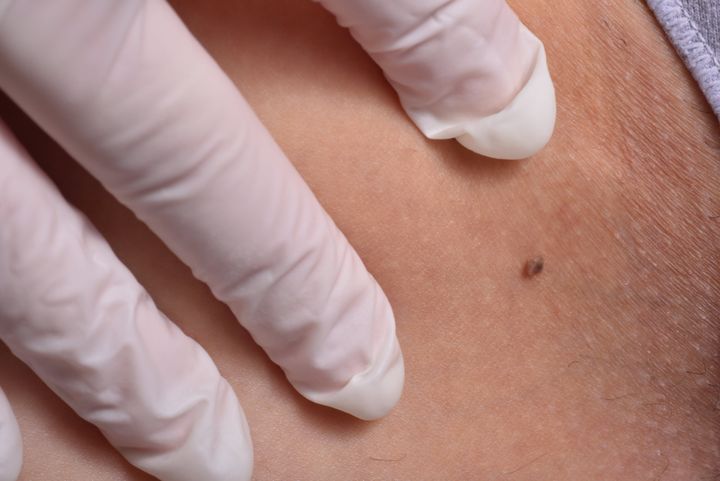
Following the news that Sarah Ferguson, Duchess of York, has been diagnosed with malignant melanoma, she stressed on Instagram “the importance of checking the size, shape, colour and texture and emergence of new moles that can be a sign of melanoma.”
Fortunately, Dr. Tim Woodman, medical director at Bupa UK Insurance who worked as a GP for 17 years in the NHS, told HuffPost UK that “If detected early enough skin cancer is easily treated and survival rates are high.”
“However, diagnosis and treatment of skin cancers are often delayed because people aren’t confident identifying the symptoms or are concerned about wasting the doctor’s time,” he added, before sharing a checklist that’s as simple as A. B, C.
What’s the system?
“We suggest employing the ABCDE checklist when you check your moles, which should flag up the key signs that your mole could be a melanoma,” experts at Bupa shared.
A stands for asymmetry. Your mole may be melanoma if “one half of the mole looks different to the other,” Bupa experts revealed.
B stands for border irregularity ― watch out for moles that have “uneven or jagged” edges.
C is for colour variability ― a melanoma is more likely than a mole to contain a range of different colours.
D is for diameter. A mole that’s bigger than 6mm across, the experts at Bupa say, is worth mentioning to your GP.
And E stands for evolution ― watch out for moles that change in size, shape, or colour.
What if I suspect skin cancer?
“If you notice that something isn’t quite right, such as a new, painful or changing mole or freckle, it’s always a good idea to speak to a medical professional,” Woodman shared.
“When it comes to conditions such as cancer, early diagnosis can have a positive impact on the long-term prognosis, and ultimately survival rates. It may be nothing, but it’s always important to check, if only to give yourself peace of mind.“
Bupa also offers a Cancer Direct Access service for those seeking to self-refer.
Those with pale skin, those who use tanning beds or spend a lot of time in the sun without protection, and those with a family history of the condition are more likely to develop skin cancer.